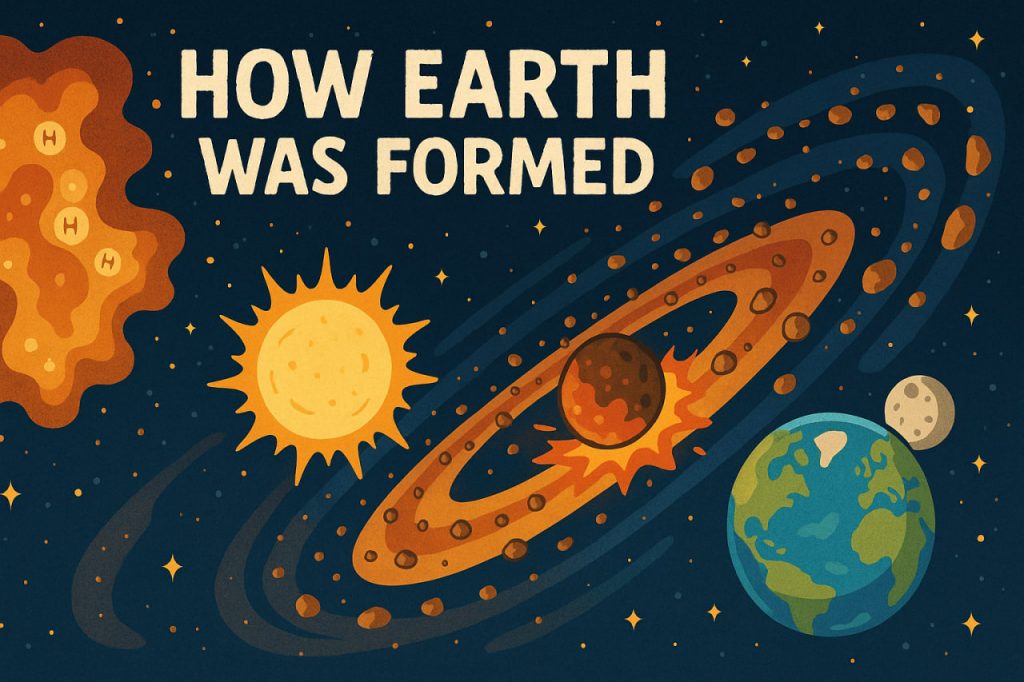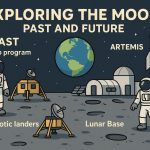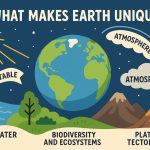The Earth as we know it is the result of billions of years of cosmic evolution. From a cloud of dust to a vibrant planet teeming with life, Earth’s journey is a complex tale shaped by gravity, collisions, and internal transformation. Understanding how Earth formed gives us insight into not only our own world but the history of the entire Solar System. We don’t know exactly how it was formed, but according to current theories, it looked something like this.
Formation of the Solar Nebula
Around 4.6 billion years ago, a nebula—a massive cloud of gas and dust left over from older stars—began to collapse under its own gravity. This collapse could have been triggered by a nearby supernova. As the cloud contracted, it spun faster and flattened into a protoplanetary disk.
At the center of this disk, the Sun formed, and the remaining material started to gather into smaller clumps that would become planets, asteroids, and moons.
Birth of the Proto-Earth
Within the disk, countless planetesimals—rocky fragments—collided and merged through a process called accretion. Over time, one growing body became large enough to be considered the proto-Earth.
This early version of Earth was incredibly hot due to frequent impacts, compression, and the decay of radioactive elements. It was a molten sphere where heavier elements like iron sank to the center, forming the core, while lighter materials formed the mantle and crust.
The Moon-Forming Impact
Shortly after Earth formed, it likely collided with a Mars-sized body named Theia. The force of this impact ejected enormous amounts of debris into orbit. Over time, this debris coalesced into what we now know as the Moon.
This impact also tilted Earth’s axis, giving us seasons, and helped stabilize the planet’s rotation.
Cooling and Atmospheric Formation
As Earth cooled, a solid crust began to form. Volcanic activity released gases like water vapor, carbon dioxide, and nitrogen, which created Earth’s early atmosphere.
There was little to no oxygen at first. Instead, Earth’s sky may have appeared orange or reddish due to volcanic gases. Over millions of years, comets and asteroid impacts also delivered water, helping to form the oceans.
The Rise of Life
About 3.8 billion years ago, Earth’s surface cooled enough for liquid water to remain stable. In these oceans, the first microbial life emerged. This marked the beginning of the biosphere—the zone where life exists.
These early organisms would later transform the atmosphere, especially through photosynthesis, eventually leading to the oxygen-rich world we know today.
Conclusion
The formation of Earth is a testament to the power of natural forces shaping the universe. From stardust and chaos, a stable, life-supporting planet emerged. This process, though violent and dramatic, laid the foundation for everything we see around us—oceans, mountains, air, and life itself. We still have to figure out how it really happened …
Glossary
- Nebula: A vast cloud of gas and dust in space, where stars and planets are born.
- Accretion: The gradual growth of a body through collisions and combination of matter.
- Planetesimal: A small object formed from dust and rock in the early Solar System.
- Core: The dense center of a planet, composed mostly of iron and nickel.
- Theia: A hypothetical planetary body that collided with Earth to form the Moon.
- Photosynthesis: A process by which organisms convert light energy into chemical energy, producing oxygen.
- Biosphere: All areas on Earth where life exists, including land, water, and atmosphere.


